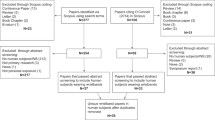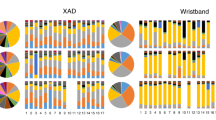Abstract
Background
Polycyclic aromatic hydrocarbons (PAHs) are a class of pervasive environmental pollutants with a variety of known health effects. While significant work has been completed to estimate personal exposure to PAHs, less has been done to identify sources of these exposures. Comprehensive characterization of reported sources of personal PAH exposure is a critical step to more easily identify individuals at risk of high levels of exposure and for developing targeted interventions based on source of exposure.
Objective
In this study, we leverage data from a New York (NY)-based birth cohort to identify personal characteristics or behaviors associated with personal PAH exposure and develop models for the prediction of PAH exposure.
Methods
We quantified 61 PAHs measured using silicone wristband samplers in association with 75 questionnaire variables from 177 pregnant individuals. We evaluated univariate associations between each compound and questionnaire variable, conducted regression tree analysis for each PAH compound and completed a principal component analysis of for each participant’s entire PAH exposure profile to determine the predictors of PAH levels.
Results
Regression tree analyses of individual compounds and exposure mixture identified income, time spent outdoors, maternal age, country of birth, transportation type, and season as the variables most frequently predictive of exposure.
This is a preview of subscription content, access via your institution
Access options
Subscribe to this journal
Receive 6 print issues and online access
$259.00 per year
only $43.17 per issue
Buy this article
- Purchase on Springer Link
- Instant access to full article PDF
Prices may be subject to local taxes which are calculated during checkout



Similar content being viewed by others
Data availability
Data are available from the corresponding author upon reasonable request.
References
Abdel-Shafy HI, Mansour MSM. A review on polycyclic aromatic hydrocarbons: source, environmental impact, effect on human health and remediation. Egypt J Pet. 2016;25:107–23.
Chen CY, Kuo YC, Wang SM, Wu KR, Chen YC, Tsai PJ. Techniques for predicting exposures to polycyclic aromatic hydrocarbons (PAHs) emitted from cooking processes for cooking workers. Aerosol Air Qual Res. 2019;19:307–17.
Dunbar JC, Lin CI, Vergucht I, Wong J, Durant JL. Estimating the contributions of mobile sources of PAH to urban air using real-time PAH monitoring. Sci Total Environ. 2001;279:1–19.
Harrison CL, Brown WJ, Hayman M, Moran LJ, Redman LM. The role of physical activity in preconception, pregnancy and postpartum health. Semin Reprod Med. 2016;34:e28–37.
Nielsen T. Traffic contribution of polycyclic aromatic hydrocarbons in the center of a large city. Atmos Environ. 1996;30:3481–90.
Lawal AT. Polycyclic aromatic hydrocarbons. A review. Cogent Environ Sci. 2017;3:1339841.
Genkinger JM, Stigter L, Jedrychowski W, Huang T-J, Wang S, Roen EL, et al. Prenatal polycyclic aromatic hydrocarbon (PAH) exposure, antioxidant levels and behavioral development of children ages 6–9. Environ Res. 2015;140:136–44.
Liu B, Xue Z, Zhu X, Jia C. Long-term trends (1990–2014), health risks, and sources of atmospheric polycyclic aromatic hydrocarbons (PAHs) in the U.S. Environ Pollut. 2017;220:1171–9.
Li W, Park R, Alexandrou N, Dryfhout-Clark H, Brice K, Hung H. Multi-year analyses reveal different trends, sources, and implications for source-related human health risks of atmospheric polycyclic aromatic hydrocarbons in the Canadian Great Lakes Basin. Environ Sci Technol. 2021;55:2254–64.
Tsai PJ, Shih TS, Chen HL, Lee WJ, Lai CH, Liou SH. Assessing and predicting the exposures of polycyclic aromatic hydrocarbons (PAHs) and their carcinogenic potencies from vehicle engine exhausts to highway toll station workers. Atmos Environ. 2004;38:333–43.
Nethery E, Teschke K, Brauer M. Predicting personal exposure of pregnant women to traffic-related air pollutants. Sci Total Environ. 2008;395:11–22.
Noth EM, Hammond SK, Biging GS, Tager IB. A spatial-temporal regression model to predict daily outdoor residential PAH concentrations in an epidemiologic study in Fresno, CA. Atmos Environ. 2011;45:2394–403.
Choi H, Perera F, Pac A, Wang L, Flak E, Mroz E, et al. Estimating individual-level exposure to airborne polycyclic aromatic hydrocarbons throughout the gestational period based on personal, indoor, and outdoor monitoring. Environ Health Perspect. 2008;116:1509–18.
Tonne CC, Whyatt RM, Camann DE, Perera F, Kinney PL. Predictors of personal polycyclic aromatic hydrocarbon exposures among pregnant minority women in New York City. Environ Health Perspect. 2004;112:754–9.
Rohlman D, Donatuto J, Heidt M, Barton M, Campbell L, Anderson KA, et al., A case study describing a community-engaged approach for evaluating polycyclic aromatic hydrocarbon exposure in a native American community. Int J Environ Res Public Health. 2019;16:327.
Samon SM, Hammel SC, Stapleton HM, Anderson KA. Silicone wristbands as personal passive sampling devices: current knowledge, recommendations for use, and future directions. Environ Int. 2022;169:107339.
Samon SM, Rohlman D, Tidwell LG, Hoffman PD, Oluyomi AO, Anderson KA. Associating increased chemical exposure to hurricane Harvey in a longitudinal panel using silicone wristbands. Int J Environ Res Public Health. 2022;19:6670.
Wang S, Romanak KA, Stubbings WA, Arrandale VH, Hendryx M, Diamond ML, et al. Silicone wristbands integrate dermal and inhalation exposures to semi-volatile organic compounds (SVOCs). Environ Int. 2019;132:105104.
Dixon HM, Bramer LM, Scott R, Calero L, Holmes D, Gibson EA, et al. Evaluating predictive relationships between wristbands and urine for assessment of personal PAH exposure. Environ Int. 2022;163:107226.
Dixon HM, Armstrong G, Barton M, Bergmann AJ, Bondy M, Halbleib ML, et al. Discovery of common chemical exposures across three continents using silicone wristbands. R Soc open Sci. 2019;6:181836–181836.
Anderson KA, Szelewski MJ, Wilson G, Quimby BD, Hoffman PD. Modified ion source triple quadrupole mass spectrometer gas chromatograph for polycyclic aromatic hydrocarbon analyses. J Chromatogr A. 2015;1419:p.89–98.
Dixon HM, Scott R, Holmes D, Calero L, Kincl LD, Waters KM, et al. Silicone wristbands compared with traditional polycyclic aromatic hydrocarbon exposure assessment methods. Anal Bioanal Chem. 2018;410:3059–71.
Porter SR, Snipp CM. Measuring Hispanic origin: reflections on Hispanic race reporting. Ann Am Acad Political Soc Sci. 2018;677:140–52.
Team R.C., R: a language and environment for statistical computing. 2018, R Foundation for Statistical Computing: Vienna, Austria.
Fisher RA. On the interpretation of χ2 from contingency tables, and the calculation of J. J R Stat Soc. 1922;85:87–94.
Kruskal WH, Wallis WA. Use of ranks in one-criterion variance analysis. J Am Stat Assoc. 1952;47:583–621.
Breiman L, Friedman JH, Olshen RA, and Stone CJ. Classification and regression trees. 2017: Routledge.
Therneau T, Atkinson B, & Ripley B, Rpart: recursive partitioning. R package version 4.1.16. 2022.
Croux C, Filzmoser, Oliveira MR. Algorithms for Projection–Pursuit robust principal component analysis. Chemom Intell Lab Syst. 2007;87:218–25.
Stacklies W, Redestig H, Scholz M, Walther D, Selbig J. pcaMethods—a bioconductor package providing PCA methods for incomplete data. Bioinformatics. 2007;23:1164–7.
Paulik LB, Hobbie KA, Rohlman D, Smith BW, Scott R, Kincl L, et al. Environmental and individual PAH exposures near rural natural gas extraction. Environ Pollut. 2018;241:397–405.
Rohlman DA-O, Donatuto J, Heidt M, Barton M, Campbell L, Anderson KA, et al. A case study describing a community-engaged approach for evaluating polycyclic aromatic hydrocarbon exposure in a native American community. Int J Environ Res Public Health. 2018;327:1660–4601. https://doi.org/10.3390/ijerph16030327.
Lodovici M, Akpan V, Evangelisti C, Dolara. Sidestream tobacco smoke as the main predictor of exposure to polycyclic aromatic hydrocarbons. J Appl Toxicol. 2004;24:277–81.
Skupińska K, Misiewicz I, Kasprzycka-Guttman T. Polycyclic aromatic hydrocarbons: physicochemical properties, environmental appearance and impact on living organisms. Acta Pol Pharm. 2004;61:233–40.
Zhang Y, Ding J, Shen G, Zhong J, Wang C, Wei S, et al. Dietary and inhalation exposure to polycyclic aromatic hydrocarbons and urinary excretion of monohydroxy metabolites—a controlled case study in Beijing, China. Environ Pollut. 2014;184:515–22.
Srogi K. Monitoring of environmental exposure to polycyclic aromatic hydrocarbons: a review. Environ Chem Lett. 2007;5:169–95.
Acknowledgements
We thank the participants in this study. At Oregon State University, we thank Michael Barton, Carolyn Poutasse, Kaley Adams, Peter Hoffman, Kyle Messier, Clarisa Caballero-Ignacio, Samantha Samon, Lane Tidwell, Richard Evoy, Caoilinn Haggerty, Ty Bryde, Teresa Valdez, Kaci Graber, Jessica Scotten, Ian Moran, Christine Ghetu, and other members of the Food Safety and Environmental Stewardship Laboratory. At Columbia, we thank the Fair Start study team, including the laboratory and data cores who supported this research. Pacific Northwest National Laboratory is a multi-program laboratory operated by Battelle for the U.S. Department of Energy under contract DEAC05-76RL01830.
Funding
Research reported in this publication was supported by the National Institute of Health (NIH) under award number UH3OD023290 and the National Institute of Environmental Health Sciences (NIEHS) under award numbers 1R21ES024718, 4R33ES024718, P30ES030287, and P42ES016465. The content is solely the responsibility of the authors and does not necessarily represent the official views of the NIH or NIEHS. SMMcL was funded by the NIH T32 ES007322; TRANSFORM TL-1 Fellowship 5TL1TR001875-07; MASS-A&WMA APERG throughout this project.
Author information
Authors and Affiliations
Contributions
Funding for this project was acquired by KAA and JBH. Project design was done by SMMcL, LMB, HMD, Elizabeth AG, KAA, and JBH. LMB and EAG completed the formal analyses. LC and DH managed cohort data acquisition. RPS provided quantification of wristband values. The manuscript was written by SMMcL with support from LMB and HMD. All authors reviewed and edited the manuscript.
Corresponding author
Ethics declarations
Competing interests
KAA and DR, authors of this research, disclose a financial interest in MyExposome, Inc., which is marketing products related to the research being reported. The terms of this arrangement have been reviewed and approved by Oregon State University in accordance with its policy on research conflicts of interest. The authors have no other relevant financial or non-financial interests to disclose.
Ethical approval
Approval for research on human subjects was obtained from the Columbia University Institutional Review Board (AAAK6753).
Additional information
Publisher’s note Springer Nature remains neutral with regard to jurisdictional claims in published maps and institutional affiliations.
Supplementary information
Rights and permissions
Springer Nature or its licensor (e.g. a society or other partner) holds exclusive rights to this article under a publishing agreement with the author(s) or other rightsholder(s); author self-archiving of the accepted manuscript version of this article is solely governed by the terms of such publishing agreement and applicable law.
About this article
Cite this article
McLarnan, S.M., Bramer, L.M., Dixon, H.M. et al. Predicting personal PAH exposure using high dimensional questionnaire and wristband data. J Expo Sci Environ Epidemiol (2024). https://doi.org/10.1038/s41370-023-00617-y
Received:
Revised:
Accepted:
Published:
DOI: https://doi.org/10.1038/s41370-023-00617-y



